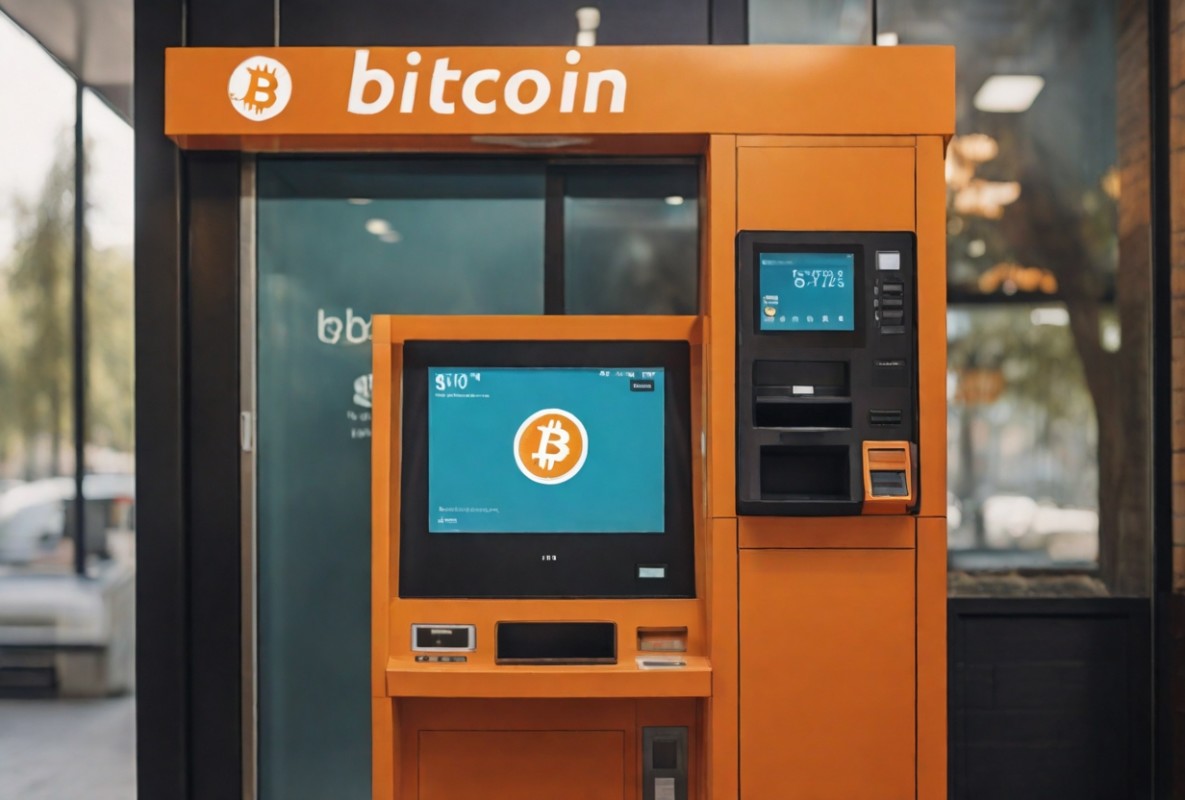Month: February 2024
Singlesig vs. Multisig: Bitcoin Self-custody Approaches Compared
If you want to remove custodial risk from your bitcoin holdings, you must take self-custody. Bitcoin custody is determined by whoever has the keys to control the bitcoin—if you aren’t holding the keys to your bitcoin, then someone else is. As the saying goes, not your keys, not your coins.
Once someone decides that they want to hold their bitcoin in self-custody, the next question becomes how to do it. Most people discover early on that hardware wallets are the most secure way to use bitcoin keys. However, the options don’t end with selecting a hardware wallet; you can also choose between singlesig, multisig, and a few other technologies that determine what is required to spend your bitcoin. In this article we will take a look at these options and compare them with one another.
Click above to visit unchained.bitcoinmagazine.com and learn more about collaborative custody
Singlesig
Singlesignature describes a wallet structure where only one private key is required to sign off on spending bitcoin. It is the oldest and most basic method of holding bitcoin. For these reasons, over 70% of the total bitcoin supply is currently held in this manner.
Despite being fairly easy to set up and use, many people have found that singlesig does not provide an adequate level of comfort. With only one key, there will always be a single point of failure that can lead to lost funds. For example, if your singlesig key becomes misplaced, then you will no longer have access to your bitcoin. Or, if your key falls into the wrong hands, a thief can sign off on transferring your bitcoin to their own wallet.
It’s important to remember that a bitcoin private key is merely randomly-generated secret information. The information can be generated by an offline tool such as a hardware wallet, but it should also be stored physically, as a seed phrase. This will mean keeping a set of 12 or 24 words secure and private.
Even for people who are quite careful and organized, important items can become lost due to mistakes or uncontrollable circumstances. If the lost item happens to be the only key to your bitcoin wealth, that would be catastrophic. Naturally, people are motivated to pursue strategies that will help ensure this never happens. Let’s explore some of the popular approaches!
Before we get to multisig, it’s worth taking a look at some of the methods people use to modify singlesig arrangements. Some of the ways people try to improve their singlesig security involve improvised strategies, while others involve standardized technological tools.
Improvised singlesig modifications
Without learning about additional technologies, someone who holds bitcoin in a singlesig wallet might think of simple techniques that appear to offer protection from losing funds. Examples include making copies of the seed phrase, splitting the seed phrase into separate pieces, encoding the seed phrase, or creating several singlesig wallets to distribute wealth. These techniques all come with trade-offs that users may initially fail to recognize. We’ll now briefly cover them in more detail.
Seed phrase copying
Making copies of a seed phrase is one strategy people use to help avoid losing access to their bitcoin in a singlesig wallet. Doing this can provide extra protection against natural disasters or misplacement. By storing multiple copies of a seed phrase in several different locations, one location could suffer unexpected destruction without you losing access to your seed phrase information.
A hardware wallet with two copies of its seed phrase backup.
On the other hand, a significant downside to this approach should be considered. With an otherwise basic singlesig arrangement, the seed phrase is the only item someone needs in order to discover your wallet balance and remove bitcoin from your wallet. In other words, if a dishonest person finds any one of your seed phrase copies, they could steal bitcoin from you. Therefore, storing your seed phrase in several locations can increase the chance of this occurring.
Seed phrase splitting
Because seed phrases typically exist as 12 or 24 words, some users will think to split up the word list into sections and store them separately. This follows the logic that if a thief managed to acquire less than the full word list, they would be unable to steal the bitcoin.
A hardware wallet with its seed phrase backup split into multiple pieces.
However, out of all the ideas covered in this article, this one is the most problematic. The theft prevention logic is flawed—if a thief managed to find a portion of your seed phrase, they could be substantially closer to being able to guess the remaining words and steal from you. Besides failing to offer the intended level of protection, this approach can also make it more difficult (if not impossible) for you as the user to access your bitcoin if any one of the seed phrase sections becomes lost.
Seed phrase encoding
Some singlesig users will think to encode their seed phrase, with the idea that if a thief finds the resulting information, they will be unable to decode it and obtain the original seed phrase to steal the bitcoin. There are many possible routes to attempt this, including using a secret formula to alter the words, or hiding your seed phrase within a larger set of words.
A bitcoin hardware wallet with its seed phrase backup and associated custom encoding.
The more complicated the encoding strategy is, the less chance there will be for a thief to reverse-engineer access to the bitcoin. But this is a double-edged sword, because a complex encoding strategy can also increase the chances of making a mistake, or forgetting how to decode the resulting material yourself. In other words, it adds a new avenue for losing access to your bitcoin.
Multiple singlesig wallets
It is widely recognized wisdom to avoid “putting all your eggs in one basket.” If you hold all of your bitcoin in one singlesig wallet, then the ever-present risk of loss or theft could be a tough pill to swallow. As a result, some people decide to hold portions of their bitcoin among several different singlesig wallets.
Two hardware wallets with their associated seed phrase backups.
The downside to this strategy is that it adds complexity and creates additional sensitive items to keep track of. While splitting your bitcoin across wallets can remove single points of failure for the entire balance, it actually creates more single points of failure for substantial portions of your wealth. For example, if you create four singlesig wallets and spread out 25% of your bitcoin in each one, you may have reduced the chance of losing 100% of your bitcoin, but you will have also increased the chance of losing 25% of your bitcoin, in the event that any one of the four wallets becomes inaccessible or compromised. As we will soon see in the upcoming sections of this article, there are methods to remove single points of failure for your entire bitcoin balance without introducing this issue.
Standardized singlesig modifications
Besides some of the makeshift approaches listed above, there are also a few standardized tools available to help address certain risks with singlesig wallets. These include BIP 39 passphrases, Seed XOR, and Shamir’s secret sharing. There are trade-offs to consider with each of these options as well.
BIP 39 passphrases
Whenever you generate a bitcoin key, you might be asked if you want to add a passphrase, or you may find the option to do this in the wallet settings. Passphrases are an additional set of characters added to the seed phrase (similar to a 13th or 25th word) that are sensitive to capitalization and can include numbers or special characters. They were introduced as a standard option alongside seed phrases in 2013 as a part of BIP39. If a key is built with a passphrase, then the passphrase will always be required to recreate the key and spend funds.
If a key includes a passphrase that is stored separately from the seed phrase, the result is similar to seed phrase splitting. For someone to access the bitcoin, both components would be required, which adds resistance to theft. A passphrase can actually achieve this without the same security risks as seed phrase splitting, and it also leaves the option open for a decoy wallet (a lesser amount of funds protected by the seed phrase alone, allowing you to plausibly deny that you have additional funds that can be discovered with a passphrase).
A hardware wallet and its associated seed phrase, plus a BIP39 passphrase.
On the other hand, passphrases also create another critical component that could be lost, causing you to permanently lose access to your bitcoin. If you store a passphrase in writing, and then it becomes misplaced or destroyed, your seed phrase will not be enough to regain access to your funds. You would also face a similar situation if you tried to memorize your passphrase and then end up forgetting it. Note that simple, easy-to-remember passphrases are weak and ineffective because they could be guessed by an attacker. It is best to use a strong passphrase instead, but doing this and attempting to remember it is one of the most common ways that people lose bitcoin in self custody.
Seed XOR
Coinkite, the manufacturers behind the Coldcard hardware wallet, have introduced another solution called Seed XOR. By using some mathematical magic, Seed XOR allows you to take your seed phrase and split it into multiple unique 12 or 24 word seed phrases that would all need to be recombined in order to reproduce the original seed phrase. By storing the new seed phrases separately, this creates another form of seed phrase splitting without the security risks mentioned in the improvised setup. It also provides the option for decoy wallets, because each resulting seed phrase component could also be used as a key for a new singlesig wallet with a smaller amount of funds.
A hardware wallet with its seed phrase backup split into multiple parts using Seed XOR.
While Seed XOR functionality is built into Coldcards as an option, the math required to perform the splitting or the recombination can also be done on paper without a Coldcard device. However, keep in mind that Seed XOR contains a similar drawback to what we’ve covered in previous sections. While offering resistance to theft, it increases the chance of losing access to your bitcoin, because if any one of the newly produced seed phrases becomes lost, you will be unable to recreate your original key and spend out of the original wallet. Next, we will investigate a couple of technologies that can avoid this issue.
Shamir’s secret sharing
In 1979, renowned cryptographer Adi Shamir formulated a secret sharing algorithm known as Shamir’s secret sharing (SSS). It works by taking secret information (which could be a bitcoin private key) and using it to produce several new pieces of information, sometimes called “shards” or “shares”. The shares are useless on their own and must be combined to reproduce the original secret. What makes SSS special, and different from something like Seed XOR, is that it can be structured so that only a portion of the shares are needed to produce the secret, rather than all of them. For example, a user could create a 2-of-3 quorum, where three unique shares exist but any two of them could be brought together to recreate the secret.
This ability is very helpful, because it can allow for theft resistance similar to some of the previously discussed approaches, but without increasing the risk of loss—in fact, it can decrease it! In the 2-of-3 quorum example, a thief who finds one of the SSS shares to a bitcoin key will not be able to access the funds in the wallet. Meanwhile, if one of the shares is misplaced or destroyed, the wallet owner can still recover their bitcoin with the remaining two shares.
A hardware wallet with its seed phrase split into multiple parts with Shamir’s Secret Share.
The creators of the Trezor hardware wallet, Satoshi Labs, introduced a standard for using SSS while creating a bitcoin key. It’s called the “Shamir backup,” and the details can be found in SLIP 39. It exists as an option while setting up a Trezor Model T, and if this option is chosen, the device will produce the user’s desired quorum of shares, each expressed as 20 words. These sets of 20 words cannot be used as a seed phrase for a decoy wallet (like with Seed XOR), and should not be combined with other words in order to attempt this, because SLIP 39 uses its own special word list.
A notable weakness of SSS is that when the required number of shares are used to reassemble the bitcoin key, perhaps to spend funds out of the singlesig wallet, a temporary single point of failure occurs. The entirety of the key must exist in one place at the time of the signature, which could be an opportune window for exploitation by an attacker. This is an inescapable fact for singlesig, no matter what modifications are used. Multisig, however, can avoid this issue and remove all single points of failure for your bitcoin custody.
Multisig
Finally we have arrived at multisignature, which is not a singlesig modification like we’ve covered up to this point, but a fundamentally different structure for holding bitcoin.
As we described in our multisig guide, a multisig wallet is created with multiple unique keys. The number of keys involved is determined by the wallet creator, as well as the amount of those keys that are required to sign off on spending bitcoin out of the wallet. These numbers are expressed as a quorum, such as 2-of-3, which would mean that there are three keys and two of them must provide signatures to spend bitcoin.
Multisig offers much better security than singlesig by eliminating single points of failure—protecting your bitcoin from loss and theft. While not all multisig quorums offer these protections, setups like 2-of-3, which is the only option Unchained offers, sit in a sweet spot for addressing both of these categories adequately for most individuals and businesses.
A multisig vault with an individual holding two keys and a collaborative custody partner holding one.
While multisig quorums might be similar to SSS quorums, there is an important difference. If a transaction is created to spend bitcoin out of a multisig wallet, each key can sign independently, at a different time and place. In other words, although a 2-of-3 multisig wallet requires two keys to sign off on a withdrawal, those keys never need to be co-located. In fact, the keys don’t even need to be brought together when the wallet is first being created, which is not true for SSS. This is great from a security perspective, and is also a much more convenient structure for a group of people who want to manage a bitcoin treasury with different members holding different keys.
Trade-offs: Inconvenience and fees
Multisig provides robust security for your bitcoin, but it comes with the trade-off of lesser convenience. Multisig makes it far more difficult for an attacker to spend your bitcoin, but that comes at the cost of convenience for the end-user as well.
Transactions involving multisig have also historically cost more in mining fees than transactions involving singlesig (on average). However, now that the Taproot soft-fork has been activated, this fact may begin to change. With new technologies utilizing Taproot and increased Taproot adoption, multisig transactions will have the same fee structure as singlesig transactions.
DIY vs. collaborative custody
Because multisig is more complicated than a basic singlesig wallet to set up and use, a significant downside to attempting multisig on your own is the lack of reliable technical support. As we explained in our article covering the basics on this topic, the wallet owner will have more keys to keep track of, and the details about how the wallet was configured is also important to save (in the form of a wallet descriptor or wallet configuration file). If someone is new to bitcoin, managing these extra pieces can feel overwhelming.
Multisig collaborative custody businesses like Unchained can provide the education and support needed for anyone to feel comfortable and confident with multisig. A collaborative custody vault can be accurately called a form of self-custody, because you are the only one who has full power to spend the bitcoin. This approach will typically involve sharing some information with your collaborative partner about your bitcoin, but it comes with the benefit of a simpler setup by reducing the number of items you need to keep track of yourself, help with wallet maintenance, support for passing bitcoin on to beneficiaries, and easy access to financial services like trading and loans.
What about 3-of-5?
One important decision in setting up a multisig vault is choosing the proper quorum, and 2-of-3 and 3-of-5 are by far the most widely used for securing bitcoin in cold storage. While it may be useful in certain circumstances, 3-of-5 introduces more complexity than necessary for most. It can provide extra redundancy, but this point can be repeated to advocate for 4-of-7, and then 5-of-9, and so forth to infinity. We made a graphic to help visualize this.
Comparison chart
Now that we have covered all of the well known structures for holding bitcoin, let’s place them in a chart to compare their features!
*This depends on whether or not you have wiped your hardware wallet in addition to splitting up your physical seed phrase with SSS or Seed XOR.
**Weak passphrases have a chance of being guessed, but strong passphrases are easier to forget yourself.
***Decoy wallets are technically possible with nonstandard derivation paths or other methods, but are not recommended because it can introduce new risks.
****With increased Taproot adoption, multisig will have the same fee structure as singlesig.
Click the image to get $100 off Unchained IRA.
Should I use singlesig or multisig?
As shown in the chart above, there are tradeoffs between all of the different structures for holding bitcoin in self-custody, and this means there is not a universally correct approach. In order to determine whether singlesig or multisig is the better model for you, you must first decide upon your preferences and priorities.
Singlesig and multisig tend to excel in opposite areas, and this important observation begs the question: why not use both? Rather than viewing these models as opponents, they can be perfect compliments to one another! It’s reasonable to consider using a multisig wallet for high-security, long-term bitcoin savings and simultaneously using a singlesig wallet to hold smaller amounts for convenient transactions (perhaps a mobile wallet that also supports lightning).
If you’re interested in the advantages of collaborative custody multisig, which keeps you in full control over your bitcoin custody while also offering technical support, streamlined inheritance, and easy access to other services, be sure to book a free consultation with the Unchained team!
Originally published on Unchained.com.
Unchained Capital is the official US Collaborative Custody partner of Bitcoin Magazine and an integral sponsor of related content published through Bitcoin Magazine. For more information on services offered, custody products, and the relationship between Unchained and Bitcoin Magazine, please visit our website.
US dollar drifts lower, consolidates gains; seen rising further
Post Content
DLCs Evolving To Meet Institutional Needs
Discreet Log Contracts are an old concept in this space at this point, proposed by Thaddeus Dryja (co-creator of the Lightning Network protocol) in 2017. DLCs are a smart contract structure designed to address three issues with contract schemes prior to the proposal: firstly the scalability of the smart contract itself, which required larger on-chain footprints for a larger set of potential outcomes; secondly, the issue of getting data external to the blockchain “into the blockchain” for contract settlement; and lastly, the privacy of users of the smart contract.
The basic scheme is very simple, two parties create a multisig address composed of the two of them, and choose an oracle. After doing so, they create a set of Contract Execution Transactions that interact with the oracle. Say the oracle is announcing the price of bitcoin, and the participants are betting on the price of bitcoin, what the oracle does is publish a set of commitments to the messages it will sign in order to “announce” the price of Bitcoin at a certain time. The CETs are constructed so that the signature on each CET one participant gives to the other is encrypted using adapter signatures. Each signature for the settlement of the contract at any given price can only be decrypted with information from the signed oracle message attesting to that given price. The oracle simply publishes their commitments to messages for whatever data they are acting as the oracle for, and any participant can non-interactively use this information to make a DLC. The last piece is a timelocked refund transaction, if the oracle never broadcasts the necessary information to settle the DLC, after a timelock period extended beyond the contract lifetime has elapsed both parties are simply refunded their money.
This solves the three major issues Tadge (Thaddeus) delineated in the original DLC whitepaper: it is scalable, needing only a single transaction to fund the contract and a single transaction to settle it; it allows a way for external data to be “brought into” the blockchain; and it solves the privacy issue, in that the way oracles just blindly broadcast data to the public they gain no insight into who is using them as an oracle in a contract. You can even use a federation of multiple oracles, where if the value they attest to is close enough to each other the contract settles correctly. One last important thing to note with DLCs, is the oracles lying to settle contracts incorrectly is a very different model than with a traditional escrow multisig. In the escrow model, an oracle can choose to selectively harm a single user by signing for an improper settlement. There is the potential for mitigating the reputational damage there, but in the DLC model an oracle cannot do this. When they sign a message it is used to settle every DLC connected to that settlement message and time, there is no way to selectively act malicious towards a single party because they do not know who is using them.
The only real shortcoming of this scheme, aside from the inescapable trust in an oracle, is the coordination issue. Depending on the nature of the contract, say a bet on the price of Bitcoin versus a bet on a sports game (team X wins or team Y wins), there could either be a handful of CETs or a massive set of CETs to cover all potential outcomes. This opens up two problems: one, if the set of transactions is large enough this creates the potential for network issues and DoS attacks wasting peoples’ time by not completing the contract set up; secondly, the potential for a free option problem that would necessitate an on-chain transaction to deal with. A free option issue would be if the contract is set up and finalized, but the party who winds up with the complete funding signature didn’t broadcast it. This would allow them to only fund the DLC on-chain if it was in there favor and not otherwise, and the only way for the other party to escape this situation would be to double spend their funding output on chain.
DLC Markets
LN Markets recently published an article describing a new DLC specification they have designed to tailor a DLC mechanism towards institutional actors. The existing suite of projects building on DLCs have been tailored more towards retail consumers, and that left room for modification to the design to address the needs of larger institutional actors.
Some issues for institutional customers are: the free options problem, which is not acceptable in that type of environment; the second is a lack of margin calls, i.e. a position either being closed if one party does not have enough margin capital to cover their side of the trade at current price, or that party adding the additional required margin to keep it open; lastly the ability to use capital in a more efficient way rather than having capital in one position locked up from the start to finish of the contract.
To address all of these issues LN Markets have introduced the concept of a DLC coordinator. Rather than peers in a contract directly coordinating between each other to handle the funding and negotiation of the contract, the coordinator can sit in the middle and help facilitate this. This solves the free options problem rather elegantly, by having the coordinator facilitate contract negotiations. Rather than each peer directly interacting with each other to sign the contract execution and funding transactions, they submit their signatures for all of these to the coordinator. At no point will either participant ever have access to the signatures needed to fund the contract, removing the ability for one to have a free option. The coordinator is the only one who will ever have both signatures, and to address the problem of them colluding with a participant or being malicious and not submitting the funding transaction for some other reason, the funding transaction includes a fee payment to them for functioning as a coordinator. This gives them a direct incentive to submit the funding transaction after the DLC has been negotiated and signed.
Another massive efficiency is in the coordination process of constructing the DLC in the first place. Without the coordinator involved, participants would have to communicate with each other, exchange address and UTXO information, and then coordinate setting up the DLC. With the coordinator, users can simply register an xpub and some UTXOs with the coordinator, as well as their offers for contract terms. When someone accepts an existing offer, the coordinator has all the information necessary to construct the CETs, after which they can simply provide them to the person accepting the offer to verify and sign, then transmit signatures to the coordinator. The original offerer will then receive the CETs to verify and sign and return as soon as they come online and decide to accept the counterparty, sending them back to the coordinator who can then combine signatures and submit the funding transaction.
Liquidations
Having the coordinator involved also offers a reliable communication point for adding the final missing piece for DLCs applied in a professional environment: liquidations and handling adding additional margin.
There was a nice infographic from the whitepaper included in the article LN Markets wrote announcing the proposal, but I feel like this one is a lot more intuitive to understand. In addition to all the CETs attached to oracle messages for price announcements that could occur at the contract expiry, there are also special settlement transactions for periods before the actual contract expiry – the interval of which can be decided by the participants in line with the frequency the oracle publishes price messages at. Each party has one special CET for each of these “liquidation times”, where if the price is outside of the contract range (i.e. all of the funds are owed to a single side) at any of those liquidation points they can simply submit this transaction and settle the contract earlier.
If at any point approaching a liquidation time one party is at a liquidation point, they can use the coordinator to coordinate adding margin to the contract, and allowing the other party to realize some of their gains by withdrawing funds from the contract. This would involve both parties collaboratively spending from the funding multisig into a new DLC that would receive more funds from the under-collateralized party and let the “winning” party withdraw some funds. The new DLC would be otherwise set to the same expiry time and with the same liquidation points set leading up to that.
This dynamic brings the capabilities much more in line with what institutional investors expect; the ability to manage liquidity more effectively, to have a contract expire early if one party is under-collateralized based on the current market price, and the ability to add more collateral in response to a coming liquidation event.
What’s the big deal?
To some this might seem like a series of very small and ultimately irrelevant adjustments to the original DLC specification, but these small changes take something that because of its existing shortcomings didn’t have much potential outside of retail consumer use and put it in the league of potentially being able to meet the needs of much larger economic actors and pools of capital. If the Lightning Network was a huge jump forward for transactional use of Bitcoin, I think this has the potential to be a similar jump forward for capital and financial markets’ use of Bitcoin.
Every use case of Bitcoin isn’t going to be a use case everyone else likes or has need of, and some may even have externalities they create for other use cases, but as an open system that is the reality of how Bitcoin works. Anyone can build on it. This proposal might not be a primary use case for many people reading this, but that shouldn’t lead to you ignoring the fact that it could grow to be a very big one.
FutureBit Partners With Rutgers University To Educate Students On Bitcoin
FutureBit, a leading provider of consumer-focused Bitcoin products, has unveiled its Higher Ed Pilot Programs in collaboration with universities across the United States, according to a press release sent to Bitcoin Magazine. This initiative marks one of the first instances of bringing Bitcoin hardware into academic settings, with Rutgers University Business School being among the initial partners.
Announcing our Higher Ed pilot programs with campuses across the US! One of the first is with Professor Guthner @RutgersBSchool and @RutgersU!
Our ability to provide plug and play vertically integrated Bitcoin systems across schools will spearhead education for the next… https://t.co/YUAoBP1yVg
— FutureBit (@FutureBit) February 13, 2024
“The RBSCryptoLab is a resource for the Blockchain Hub members, enabling Rutgers students to build, run, and maintain mining equipment,” said Professor Mark Guthner, leading the initiative at Rutgers. “In addition, it facilitates the learning process by merging theory with practice. Students learn how blockchains work and how decentralized networks perform their important functions. The RBSCryptoLab’s latest acquisition is the Apollo Bitcoin node and mining machines designed, manufactured, and sold by FutureBit.”
By providing plug-and-play Bitcoin systems to educational institutions nationwide, FutureBit seeks to revolutionize the learning experience for the next generation. Students will not only learn the intricacies of Bitcoin as a monetary network but also comprehend its decentralized nature and its implications for society on a technological level, according to the release.
“The only way we shed the current roadblocks in our society is to first make sure the next generation will be educated on decentralized systems, and their superiority to any other form of governance,” stated FutureBit’s founder, John Stefanopoulos. “Students all over the country will now have the ability to see Bitcoin in action in real time in front of them, and that drives curiosity of what Bitcoin is about more than anything else. We can’t wait for the world they will all create.”
Through partnerships like this with Rutgers University, FutureBit seeks to pave the way for a future where Bitcoin education plays a pivotal role in shaping the next generation.
New UK Rules Cause Consternation for Bitcoiners
The below is an excerpt from a recent edition of Bitcoin Magazine Pro, Bitcoin Magazine’s premium markets newsletter. To be among the first to receive these insights and other on-chain bitcoin market analysis straight to your inbox, subscribe now.
New regulations from the British Financial Conduct Authority (FCA) have taken effect over UK businesses that deal with Bitcoin and other cryptoassets, leading to immediate public disapproval.
These new regulations, quietly imposed in mid-February, came as a surprise to many of the users impacted. The FCA has already impacted several payment processors like PayPal and Luno, which have ceased all ability for users to purchase Bitcoin. The main thrust of these new regulations, however, has been in developing what the FCA calls “positive frictions.” Piggybacking on previous decisions in 2023 to combat the rise of “finfluencers,” such as banning refer-a-friend bonuses and other incentives from non-crypto investment sites, the FCA has aimed its new regulations at countering “social and emotional pressures to invest”. In the main, this initiative amounted to one most controversial rule: quizzes and other competency tests on all major exchanges, preventing users from accessing their own funds.
The background for new regulations of this scale are, unsurprisingly, quite complicated. For starters, the FCA is a financial regulator that exists at the behest of the British government, but is not directly controlled by it. Although the Treasury does make appointments to this board, its daily functions are nevertheless independent of direct oversight. For example, the FCA’s predecessor agency, the Financial Services Authority (FSA), was founded in part to curtail the practice of industry self-regulation in the finance sector, which is a legally recognized type of trade association. In fact, CryptoUK, the self-regulating trade association in Britain’s digital asset sphere, directly spoke against these new regulations.
All this is to say, it’s little wonder that the FCA feels empowered to act this unilaterally, especially when it might contradict some of Parliament’s long term economic goals. British Prime Minister Rishi Sunak has made an ambitious policy out of trying to promote growth in the crypto sphere. Sunak wishes to make the country a “crypto hub”, attracting international capital and facilitating industry development through friendly regulation. It’s little wonder that Sunak has identified Bitcoin as an area of major growth: A substantial percentage of Britain’s existing economy is powered by similar longstanding international relationships in the world of banking and finance, and expectations for the economy as it stands have been lagging.
So, if the same sources of income have been failing to meet expectations, why not look towards a rapidly growing industry that could doubtlessly benefit from these existing ties? Sunak claimed that the first item on his pro-Bitcoin agenda has been to pass clear legislation around a stablecoin, but new FCA regulations have also been very high up his priorities list. There’s just one question, then. Why has an agenda intended to place exchanges under the “same legal framework that covers investment banking and insurance” led to such an overreach?
For starters, the FCA has been marked for a notorious hostility to Bitcoin in the last several months. Although the United States has made worldwide headlines with its approval of a Bitcoin spot ETF, the futures ETF with more indirect ties to bitcoin’s actual valuation has been legal well before that. The FCA, however, established a complete shutdown of Bitcoin-related derivatives in 2021, and has not given any indication that they wish to change this stance. This backwards attitude puts the UK not only behind the US, but also most of its other largest trading partners; both prominent members of the English-speaking world like Canada and Australia as well as the European Union have all begun embracing this multibillion dollar derivatives market. Even Hong Kong, with longstanding economic ties to Britain, has shown far greater receptiveness on this front.
The FCA’s conservative attitude towards such a massive and growing industry has hardly gone unnoticed, needless to say. Lisa Cameron, MP and Chair of the Crypto and Digital Assets All-Party Parliamentary Group (APPG), has made public statements alongside very similar lines as the reports published by APPG, claiming that the world of Bitcoin is of vital economic importance. Although “The APPG has been clear in its recent inquiry report that..we must ensure that the U.K. has robust standards in terms of regulation and consumer protection,” said Cameron. “The APPG is aware that the new financial promotions regime has caused complications for some crypto and digital firms, and of reports that a number of operators have paused crypto purchases while they adapt to the new regime.” She went on to add that “While consumer protection must remain a top priority, government and regulators must also take care to ensure that we do not inadvertently deter responsible and regulated operators from choosing to invest in the U.K.”
So, if nothing else, the concern about these regulations is shared by actual legislators and not only the community. Cameron’s criticism seems particularly noteworthy in that she has only been part of Sunak’s party since October 2023, having previously won 3 elections under an SNP ticket. Additionally, Coinbase has also made headlines with its January hiring of George Osborne, former Chancellor of the Exchequer, in an advisory role. Considering that Coinbase is one of the exchanges most directly impacted by these new rules, a man who was in charge of the Treasury for 6 years is bound to have useful advice.
In other words, there are possible sources for opposition from several different sectors, as both government figures and industry leaders have voiced their objection, alongside the consumers as a whole. As for a timeline on the FCA changing their policies, however, it’s anyone’s guess. Meanwhile, there have been several other prominent interactions between the British legal system and the world of Bitcoin. Craig Wright, the so-called “Fake Satoshi,” is currently involved in a court case over his continued claims that he is the true inventor of Bitcoin. If the court rules against him, it may prove the end for a recurring episode in Bitcoin’s subculture. Similarly, although the United States is known for making the most prominent mass-scale seizures of Bitcoin, British law enforcement did manage to seize more than £1.4 billion in bitcoin in late January.
It’s likely that the FCA’s rules will eventually be loosened one way or another, as the British government has put such a priority on making these new regulations friendly to the industry. If pushback is loud and varied enough, it’ll be clear that a new course is necessary. Bitcoin’s economic star has been going up and up over the past few years, and it’s way too powerful for unelected regulators to put up a high degree of stubbornness. If we can see it in the US’ fight for a Bitcoin ETF, we can see it in the pushback to the FCA: nobody is strong enough to challenge Bitcoin’s crown.
Bitcoin Magazine Expands Global Presence with New Swiss Office in Partnership with White Rock Management
In a significant move to broaden its international reach, Bitcoin Magazine, in collaboration with White Rock Management, announced the opening of its new office in Lugano, Switzerland, on February 14, 2024. This strategic expansion into the heart of Europe underscores the publication’s commitment to fostering Bitcoin adoption and education across the globe.
Lugano, a city that has emerged as a pioneer in Bitcoin integration, allowing its residents to pay taxes with the Bitcoin, serves as the perfect backdrop for Bitcoin Magazine’s latest venture. This choice highlights the city’s and, by extension, Switzerland’s, innovative approach to Bitcoin. With over a thousand blockchain and Bitcoin-centric companies calling Switzerland home, the country offers a fertile ground for Bitcoin Magazine‘s mission.
White Rock Management, specializing in Bitcoin mining utilizing renewable energy with operations in Sweden and the USA, aligns with Bitcoin Magazine’s principles, emphasizing the importance of partners adhering to Bitcoin-only standards.
Mike Germano, President of Bitcoin Magazine, expressed his enthusiasm for the new office, drawing an inspiring parallel to Former President Obama’s analogy of Bitcoin as akin to “carrying a Swiss bank in one’s pocket.” Germano stated, “This expansion is a testament to our unwavering commitment to global Bitcoin adoption and our mission to empower individuals with financial sovereignty through Bitcoin. Lugano, a city leading in Bitcoin innovation, is the ideal location for our DACH region base, reflecting our excitement to be part of and contribute to this avant-garde ecosystem.”
Sergey Tron, Ukrainian entrepreneur, investor, and founder of White Rock Management, highlighted the success of Bitcoin Magazine‘s initiatives in Ukraine and Central Asia, attributing the growth to a focus on educating the market about Bitcoin. “Our collaboration with Bitcoin Magazine to enter new markets is pivotal to our strategy. The launch of Bitcoin Magazine Switzerland marks a significant step in our journey towards global expansion and underscores our dedication to fostering Bitcoin understanding and adoption,” Tron remarked.
The Switzerland office of Bitcoin Magazine will focus on providing in-depth coverage and analysis of Bitcoin-related news and developments, both from the DACH region and worldwide. The Swiss edition is set to launch its website on February 19, offering a rich source of Bitcoin education and news. Plans for a print edition are also underway, with initial publications in German, followed by French and Italian versions to cater to a diverse audience.
This expansion is more than just a new office; it’s a bridge connecting Bitcoin enthusiasts and experts across borders, fostering a community united in the pursuit of knowledge and the advancement of Bitcoin adoption.
Join Us in Pioneering Global Bitcoin Adoption
As the most trusted voice in the Bitcoin community, Bitcoin Magazine is actively planning and seeking professional partners for further international expansions. Our goal is to support additional languages and regions, extending our influence and fostering Bitcoin adoption worldwide. If you share our vision and are interested in learning more about partnership licensing opportunities, we invite you to reach out.
Please contact Mark Mason, Publisher, International at Bitcoin Magazine, at mark.mason@bitcoinmagazine.com for more information on how we can collaborate to drive the future of Bitcoin together.
Changing Regulatory Dynamics For Bitcoin ATMs
In the ever-evolving landscape of Bitcoin, changes can be hard to keep up with. As we enter into a new year, it’s important to be mindful that significant industry shifts and expansions will likely occur.
The increase in regulatory measures we’ve seen over the last year is expected to continue well into 2024 and stands out as an industry trend poised to instigate substantial changes.
One part of the industry that will surely be impacted by these changes are Bitcoin ATMs. As the regulatory environment tightens, new state-specific licenses for Bitcoin ATMs are emerging – such as California’s AB39 bill, which was recently signed into law. 2024 promises to provide both challenges and clarity for both the Bitcoin and Bitcoin ATM industries and money transmitter licenses (MTLs) play a pivotal role in this conversation
The Increasing Importance Of MTLs
Traditionally, MTLs are associated with some cryptocurrency exchanges and traditional financial institutions. MTLs are issued by state authorities, allowing businesses to engage in the transmission of money.
Many companies are expected to acquire this type of license, and Bitcoin ATM operators often fall under this type of regulation.
For example, in New York, the BitLicense has historically been the predominant state-specific cryptocurrency license in the United States. However, with the new California AB39 bill being signed into law, a new set of regulations tailored specifically to the crypto industry will be introduced. This will require MTLs for digital assets in California and mandates Anti-Money Laundering (AML), cybersecurity, and risk management policies. It provides more oversight to the compliance processes in place for the digital assets industry in California.
This type of regulation marks a significant shift, showing that more and more states may follow suit by creating their own regulatory frameworks. As a result, we may see a more regulated and compliant crypto industry, with Bitcoin ATMs following along behind.
Challenges For Smaller Bitcoin-Related Companies
The obvious goal of increased regulation is to provide legal clarity, but it also poses difficult challenges for smaller Bitcoin-related companies, like small Bitcoin ATM (BTM) operators. In the Bitcoin ATM market there is a large disparity amongst the roughly 200 BTM operators, with the largest operator, Bitcoin Depot, operating around 6,100 BTMs in the U.S. and many small operators operating as few as just one BTM. For the operators just managing one BTM or a small number of BTMs, obtaining an MTL is no small feat and is more difficult than it is for larger operators that have more financial resources and personnel. It involves paying application fees, complying with minimum net worth thresholds and meeting other stringent requirements, which include having a Chief Compliance Officer and supporting staff, an AML compliance program, transaction monitoring systems, audited financial statements, and conducting regular independent audits to determine the state of a company’s ability to be approved for a license. Once the license is received the company is also subject to reporting requirements, annual license renewals, and examinations from state regulators at random every few years.
For smaller companies with limited financial resources and only a handful of employees, these types of requirements can be daunting. In response to these types of challenges, smaller operators may face a difficult decision: either sell their company or establish partnerships with larger operators.
Larger operators can offer these smaller companies partnership programs, which allow them to retain ownership of their machines while outsourcing operational responsibilities. This model allows smaller operators to continue within the Bitcoin industry while simultaneously navigating the regulatory landscape.
Focusing on Fraud Prevention and Consumer Protection
As the crypto industry shifts toward more regulatory compliance, it also looks to increase fraud prevention measures. These efforts include improving consumer protection protocols, mitigating risks, and enhancing transparency. There is a concerted effort to provide as much security as possible to Bitcoin ATMs and other crypto-related financial services.
Like other traditional financial platforms, many Bitcoin ATM operators have taken proactive steps to integrate scam warnings into their interfaces. These precautionary messages serve as an alert system so that users are notified about potential risks associated with transactions. However, current trends suggest that an evolution toward more standardized warnings and disclosures may be coming down the pipe for Bitcoin ATMs.
Interestingly, statistics from the Chainanalysis` 2023 crypto crime report present a contrasting picture by indicating that less than 1% of all fraudulent transactions occur at Bitcoin ATMs. Despite these low percentages, regulatory bodies and policymakers remain vigilant. They acknowledge that there are potential risks lurking within the crypto realm, which is why they feel they must do their due diligence.
Additionally, this heightened scrutiny is expected to trigger the implementation of more regulatory measures. States are gearing up to clamp down on non-compliant Bitcoin ATM operators with the primary objective is to curb the operations of nefarious entities while also preventing fraudulent activities.
Ultimately, this shift toward strengthening fraud prevention measures serves to reinforce consumer protection within the crypto world. This signals a pivotal moment in the growth of the industry. As regulatory initiatives continue to gather momentum, they are poised to shape a more resilient and secure landscape for both newcomers and seasoned crypto enthusiasts.
A Way Forward with Collaboration and Compliance
With a continually evolving regulatory landscape comes collaboration between industry players. As a result, compliance with new requirements will be crucial. Larger Bitcoin ATM operators are positioned to play a pivotal role in supporting smaller operations through partnership programs, which will help ensure a more compliant and robust Bitcoin ATM ecosystem.
Moreover, the industry’s proactive approach to fraud prevention, with uniform warnings and disclosures, reflects a commitment to consumer protection. While the regulatory changes may bring about initial challenges, they are ultimately primed to foster a more secure and transparent environment for cryptocurrency transactions.
Navigating the Regulatory Landscape in 2024
It goes without saying that 2024 is expected to be a transformative period for the crypto industry, especially for Bitcoin ATM operators. With the emergence of state-specific licenses, the regulatory landscape is becoming more defined.
As the crypto ecosystem continues to evolve and develop, navigating those regulatory waters will be essential for all companies to thrive and contribute to the broader adoption of cryptocurrencies in the mainstream.
This is a guest post by Brandon Mintz. Opinions expressed are entirely their own and do not necessarily reflect those of BTC Inc or Bitcoin Magazine.
Japan warns against rapid, speculative yen falls
Post Content
Asia FX rattled by hot US inflation, Japanese yen weakens past 150
Post Content
US dollar rises to three-month high after inflation data, surges past 150 yen
Post Content









